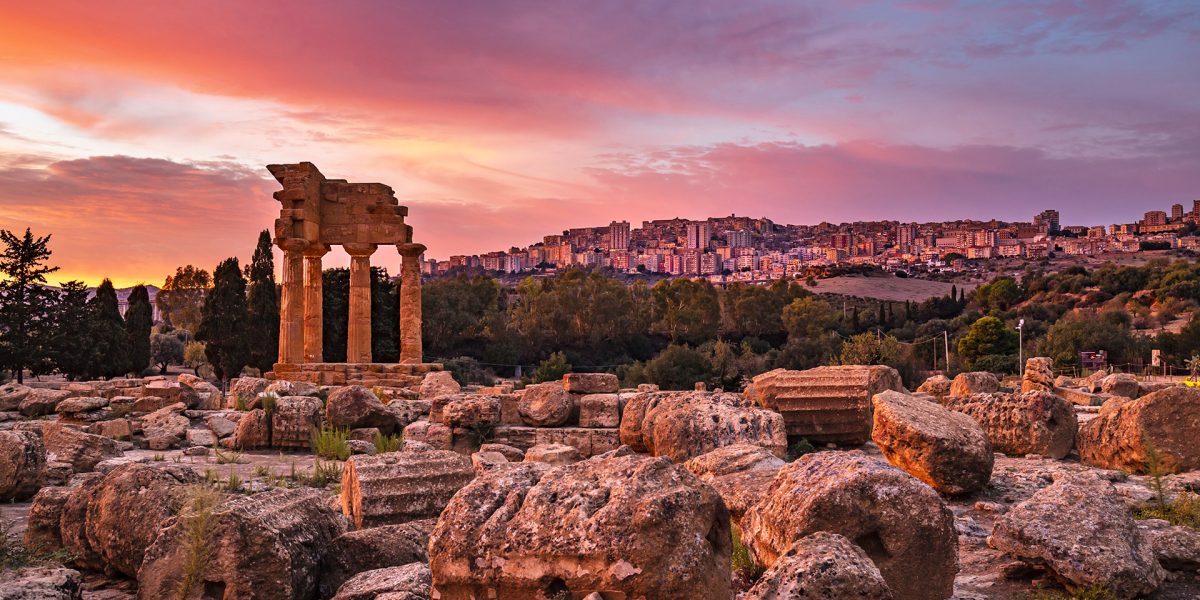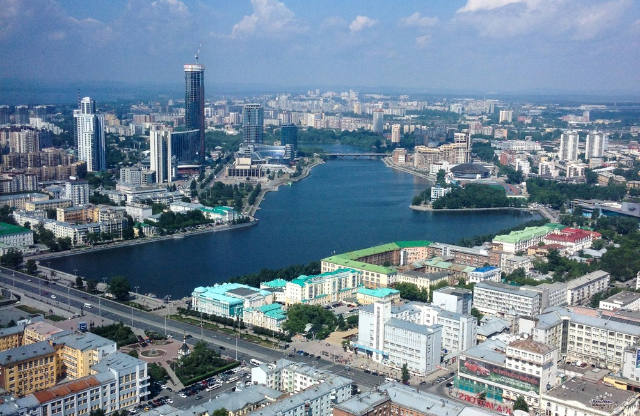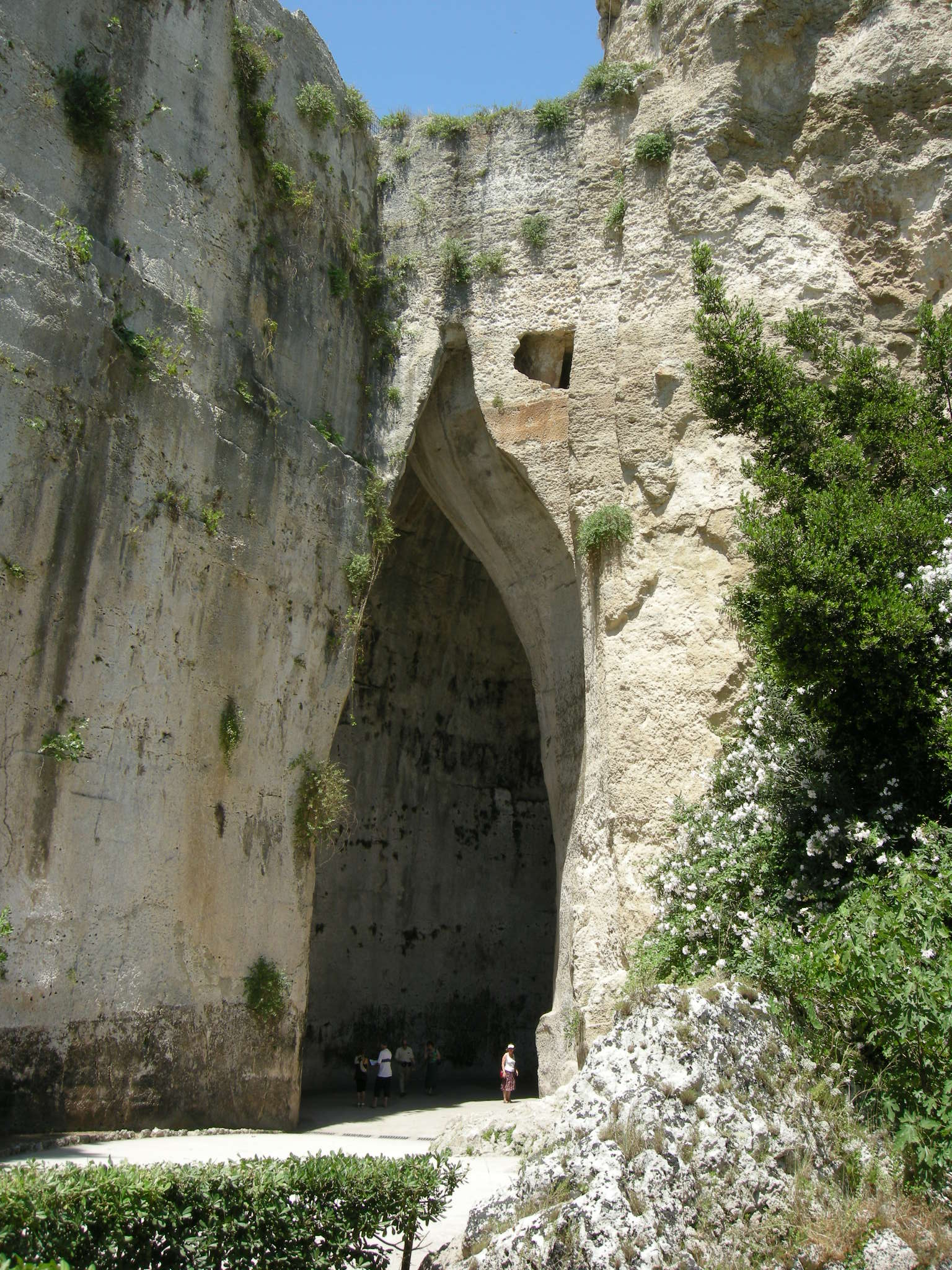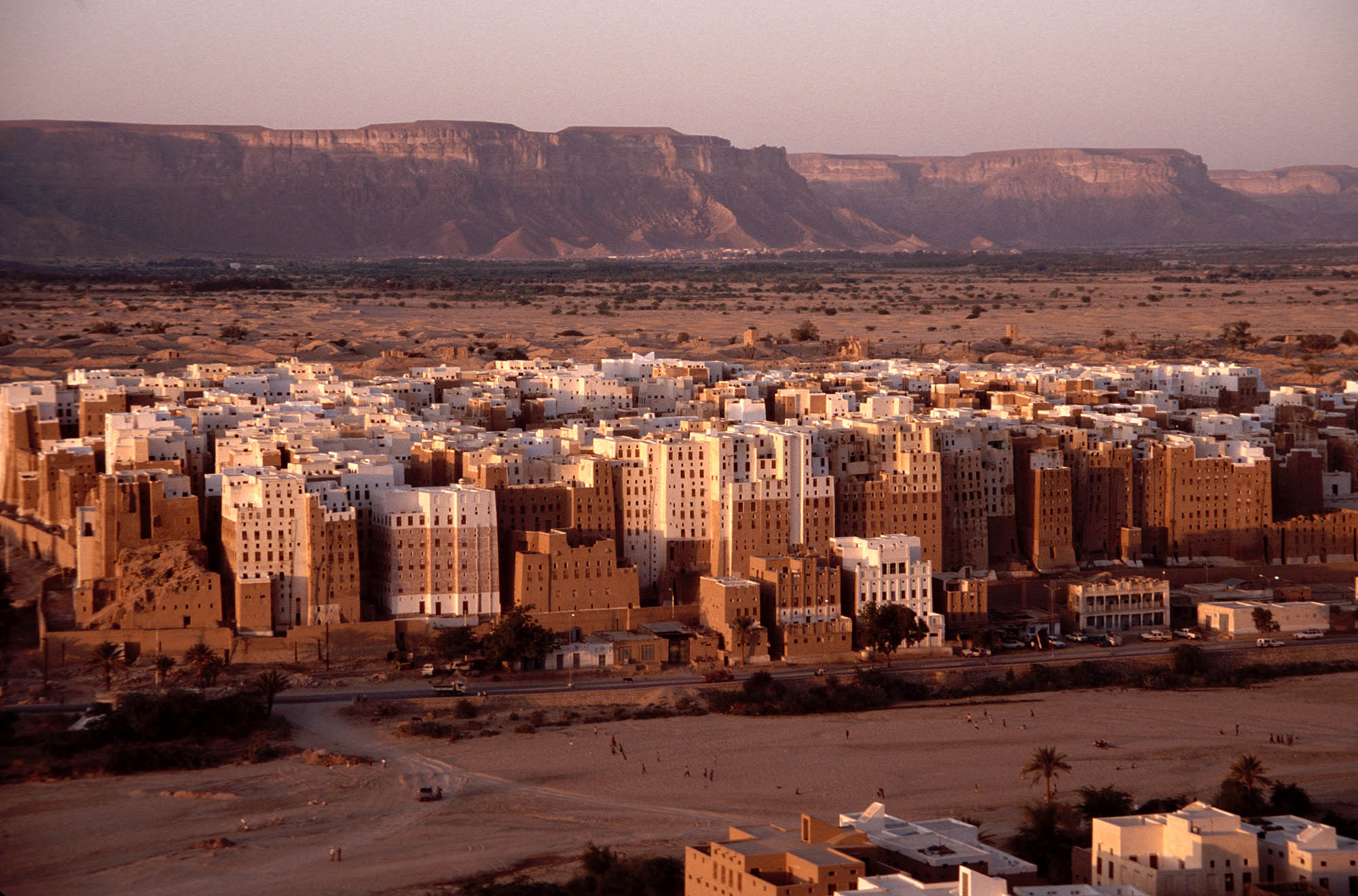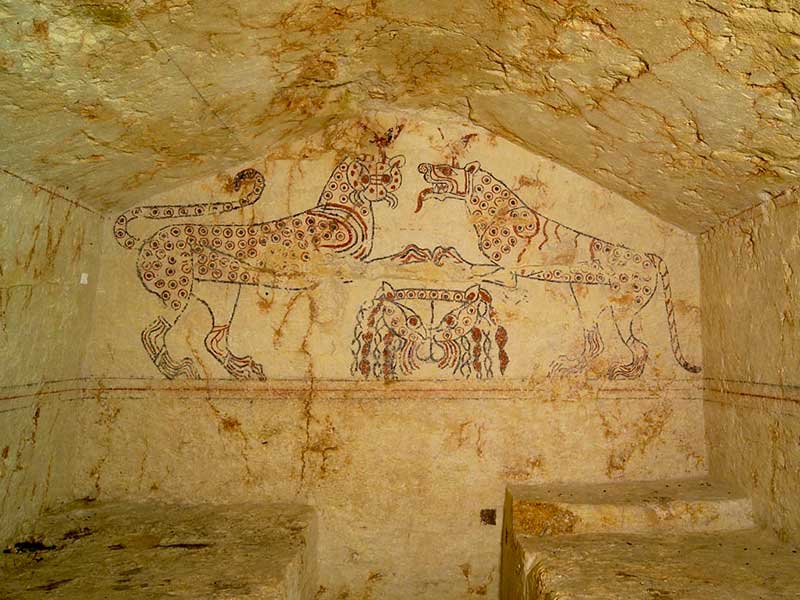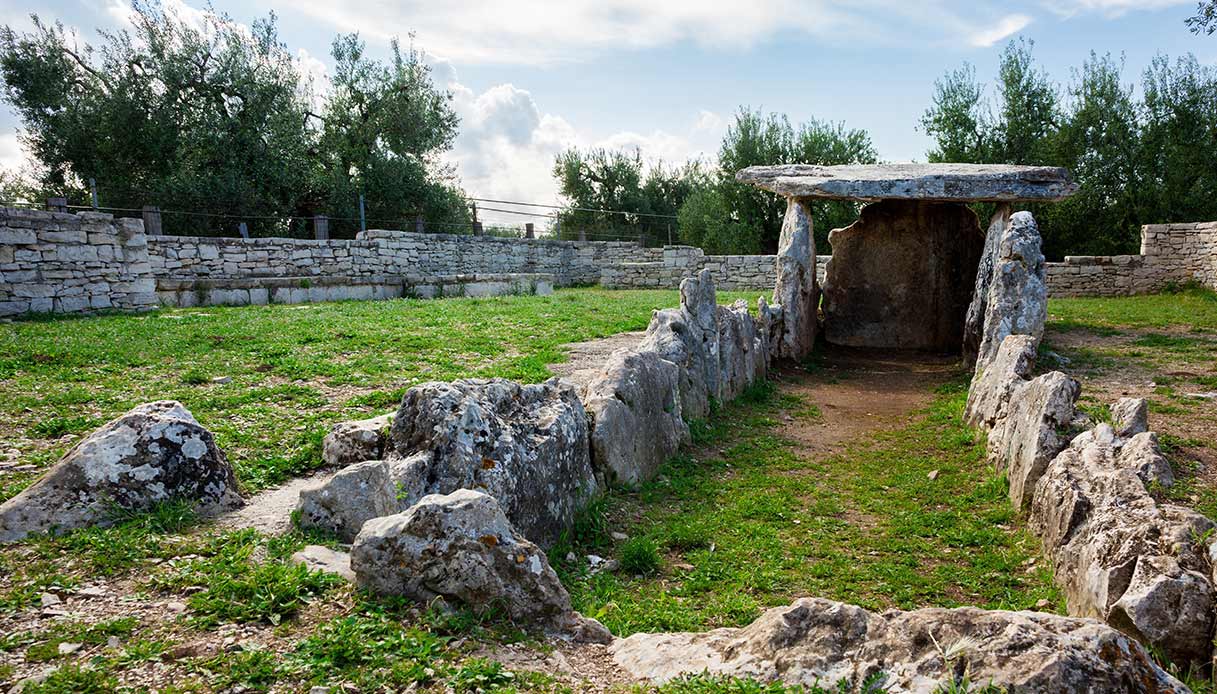The magical Valley of the Temples, declared a UNESCO World Heritage Site since 1997, is certainly the highest and most characteristic testimony of Magna Graecia in Sicily. The valley is housed in an archaeological park considered the largest in the world, including 1,300 hectares of land. The birth of the polis agrigentina is linked to the development of the polis Gela: the city, in fact, was founded in 581 BC by some inhabitants of Gela, originally from the islands of Rhodes and Crete, with the name Ἀκράγας (Akragas), from the river of the same name that bathes the territory. It was one of the main cities of the ancient world, an important urban centre both economically and politically.
The settlement was protected in the sixth century by a defensive system, consisting of a circuit of walls that exploited the topographical characteristics of the place, consisting of the plateau on the side of hills that dominated the coast and of which the "valley of the temples" it occupied the southern edge and did not constitute the acropolis, located instead further upstream, in correspondence with the medieval nucleus of the current city.
The military expansionism of Akragas had particular impulse at the time of the tyrant Terone (488-473 B.C.) and the victory over the Carthaginians. A period of rivalry with Syracuse followed. The great temples, built in the 5th century, testify to the prosperity of the city.
After the sacking by the Carthaginians, in 406 B.C., followed a period of decadence of the city, which however was rebuilt. From 262 B.C. Agrigento entered the Roman dominion, remaining however an important city. Starting from the VII century the city became impoverished and depopulated and the urban centre was reduced to the only hill of the acropolis, thus abandoning both the urban area and the area of the temples.
